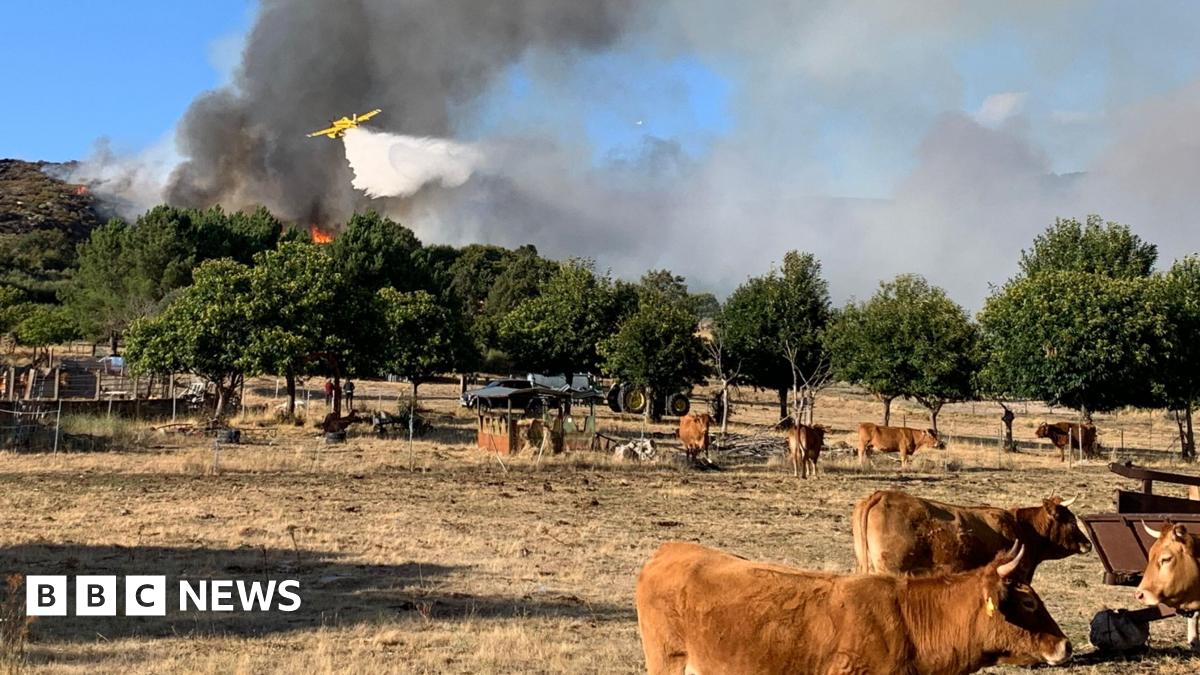And this summer’s main wildfire hotspots, in the west and north-west, have developed rural tourism in recent years as an alternative to the beach holidays for which Spain used to be known.
Hiking is popular here, for example along the Camino de Santiago trail or in the area’s mountain ranges, as is wine and food related tourism.
Sanabria Lake, the largest glacial body of water in the Iberian peninsula, is a major local attraction, surrounded by a natural park. But the spread of the fire that began in Porto de Sanabria in mid-August caused it to be shut down. And many tourists left the area, as smoke filled the air in nearby towns.
“In August, this area was at full capacity in terms of tourism and people who have second homes here,” says Miguel Ángel Martos, the mayor of Galende, which is a few minutes’ drive from the lake.
“And then, on 18 August, it dropped down to 10% of capacity.”
For tourists this was inconvenient. But for many locals it spelled financial disaster. Among them was Óscar David García López, who has a contract to hire two bar-restaurants on the shores of the lake.
He estimates that during the second half of August, when the local authorities closed down the lake, he lost €80,000, because of the rental of the bars, the wages and social security payments of his 14 employees, and the food which he had bought but which could not be sold.
“The regional government has said it will pay me €5,500,” he says, laughing bitterly at the thought. “They are going to have to come up with some other kind of compensation because I didn’t want to close, they forced me to.”
The Hosteltur tourism association warned that the damage caused by the wildfires in such areas “is not limited to the material impact, but also the impact on the image… of these destinations”.
